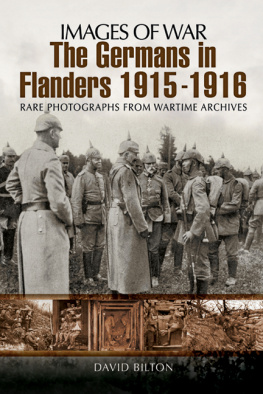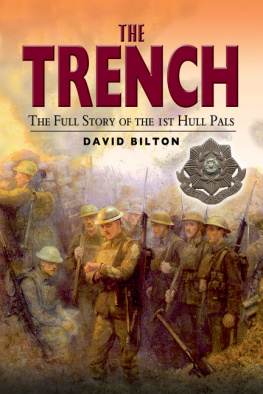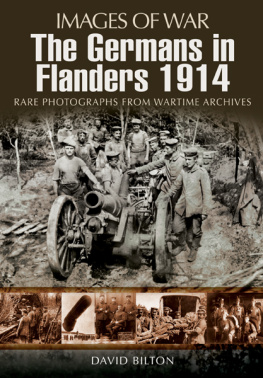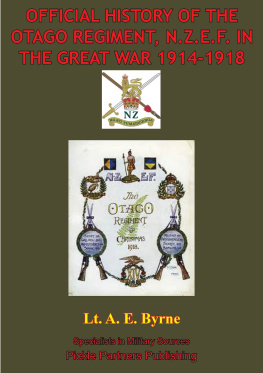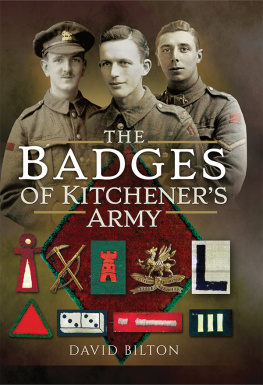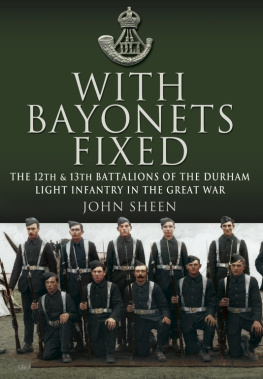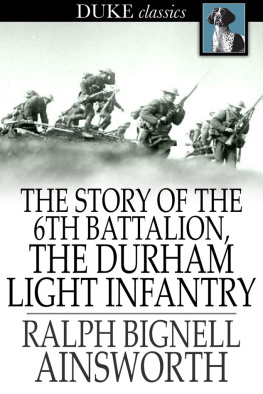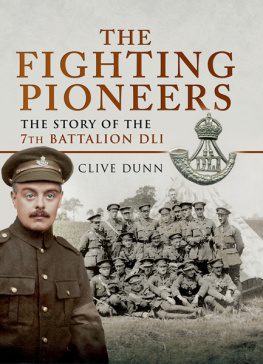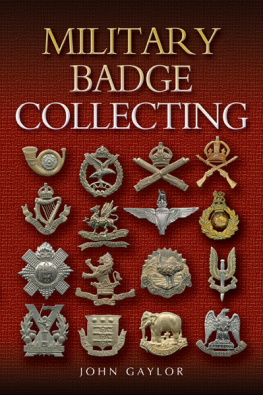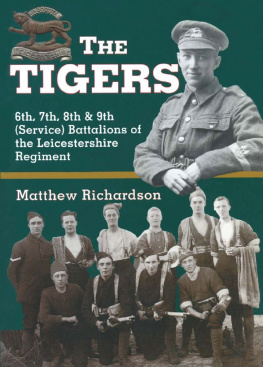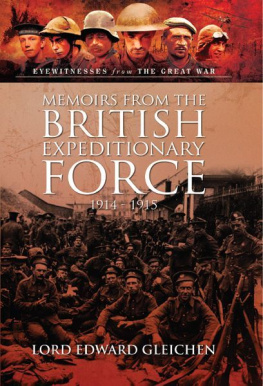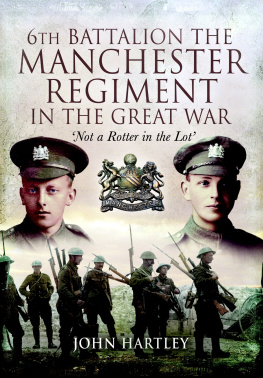Pagebreaks of the print version

Badges of the Regular Infantry 19141918
Badges of the Regular Infantry 19141918
David Bilton
First published in Great Britain in 2021 by
Pen & Sword Military
an imprint of
Pen & Sword Books Ltd
47 Church Street
Barnsley
South Yorkshire
S70 2AS
Copyright David Bilton 2021
ISBN 978 1 52675 802 6
eISBN 978 1 52675 803 3
Mobi ISBN 978 1 52675 803 3
The right of David Bilton to be identified as the Author of this Work has been asserted by him in accordance with the Copyright, Designs and Patents Act 1988.
A CIP catalogue record for this book is available from the British Library
All rights reserved. No part of this book may be reproduced or transmitted in any form or by any means, electronic or mechanical including photocopying, recording or by any information storage and retrieval system, without permission from the Publisher in writing.
Pen & Sword Books Limited incorporates the imprints of Atlas, Archaeology, Aviation, Discovery, Family History, Fiction, History, Maritime, Military, Military Classics, Politics, Select, Transport, True Crime, Air World, Frontline Publishing, Leo Cooper, Remember When, Seaforth Publishing, The Praetorian Press, Wharncliffe Local History, Wharncliffe Transport, Wharncliffe True Crime and White Owl.
For a complete list of Pen & Sword titles please contact
PEN & SWORD BOOKS LIMITED
47 Church Street, Barnsley, South Yorkshire, S70 2AS, England
E-mail:
Website: www.pen-and-sword.co.uk
Or
PEN AND SWORD BOOKS
1950 Lawrence Rd, Havertown, PA 19083, USA
E-mail:
Website: www.penandswordbooks.com
Acknowledgements
There are so many people to thank for assistance with this book. If I leave someone out it is not intentional and I sincerely apologise. This book would not have been possible without the help and early guidance of Mike Hibberd, a curator at the Imperial War Museum (IWM), now retired, who allowed me to examine the extensive collection held by the museum and to read the correspondence collected by the then National War Museum (NWM) in the latter part of the First World War. This provided the foundation on which to build this book. What is incredible about this correspondence is that in the middle of 3rd Ypres, many COs and adjutants found the time to provide information on something so inconsequential to their task.
Further information came from the many regimental museums across Britain, from the identification pamphlets produced in the 1970s by Major Waring, founder of the Military Heraldry Society, and from many enjoyable hours spent reading through folders, compiled by Haswell-Miller, among others, held by the Ogilvy Trust (now AMOT).
While most of the photographs and some of the badges have come from my own collection, many individual collectors have also provided photos and information. Unfortunately, over the intervening years since I started the project many of their names have become detached from their contributions sincere apologies. Three names stand out for their help with the later stages of the project: Alan Jeffreys at the IWM who allowed me to photograph their badge collection; Jon Mills, a fellow member of the Military Heraldry Society who contributed many photographs to help highlight badges; and Bob Smethurst who let me photograph his badges and copy his photographs thank you so much.
Many other collectors and libraries happily contributed: Robert Andrews, Tony Ashworth, John Bodsworth, Jerry Bond, Ted Croucher, John Gregory, Paul Hannon, Mark Holden, Martin Kerry, Norman Litchfield, Jonathan D.J. Maguire BA (Hons) War Studies (Researcher RIrF Museum), R.J. Marrion, Chris McDonald, Barrie Morris, Graham Stewart, Terry Sampson and the Taylor Library. Further assistance was provided by A. Jackson, T. Scala, T. Chadd, R. Litchfield, G. Tyson, H. Rook, L. Cable and B. Golding. As images have been sent to me by many people, far more than listed, some of whom did not want to be acknowledged, I cannot guarantee their original ownership. Keeping track was made even more difficult when my computer died; it was difficult to reconstruct even the basics, so I apologise for any inadvertent use of copyright photographs; this will be corrected in a second edition.
What made this research especially interesting, like the Kitchener book, was contact with the men who wore the badges, commoner to lord, privates, NCOs and officers from second lieutenant to lieutenant general, and even a rear-admiral who began his career in the Royal Engineers; men such as Corporal J.


